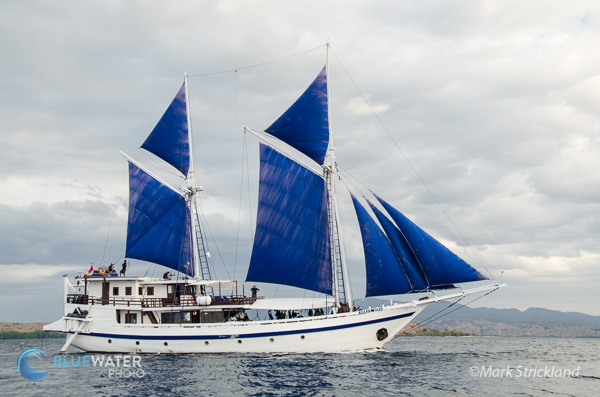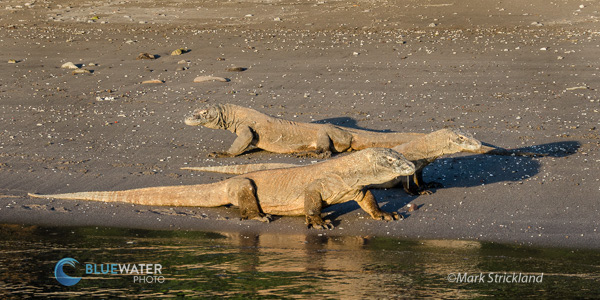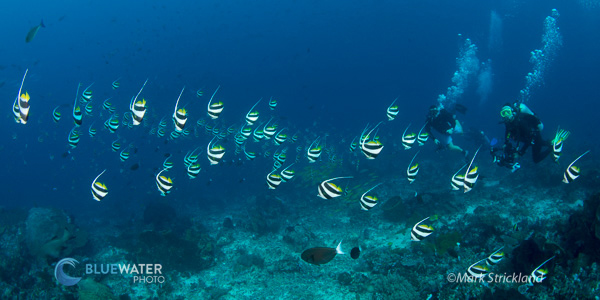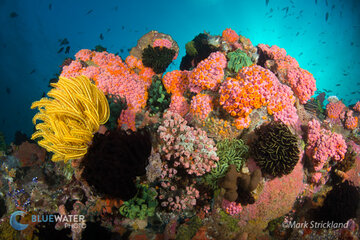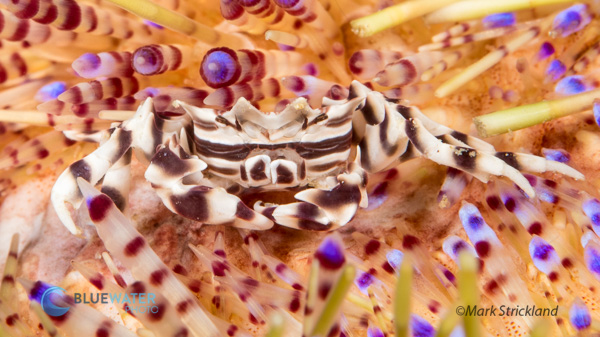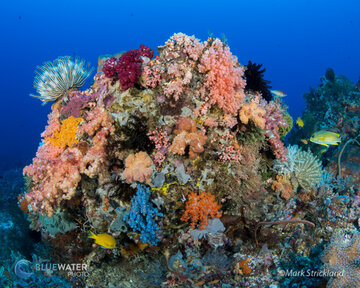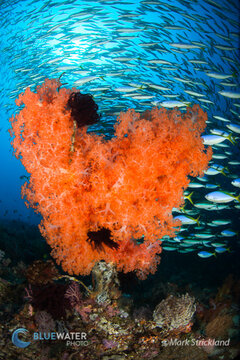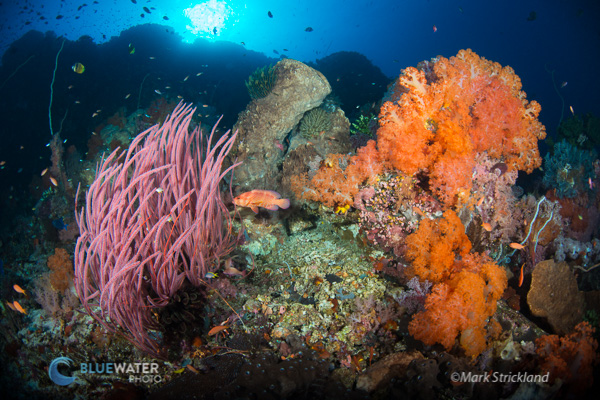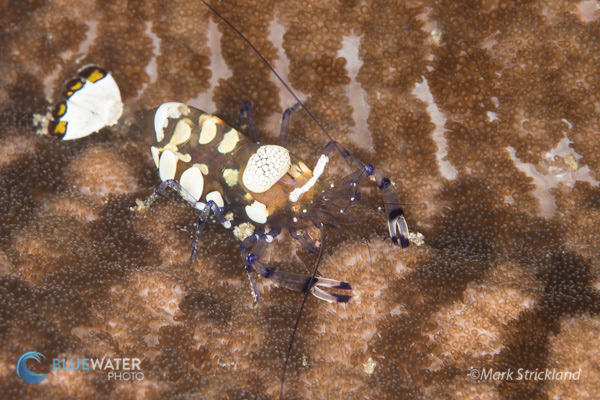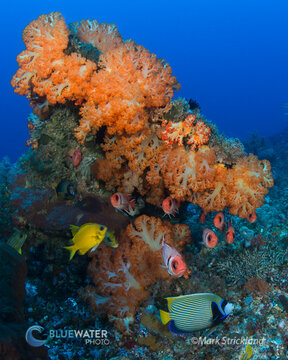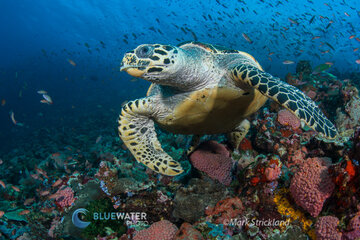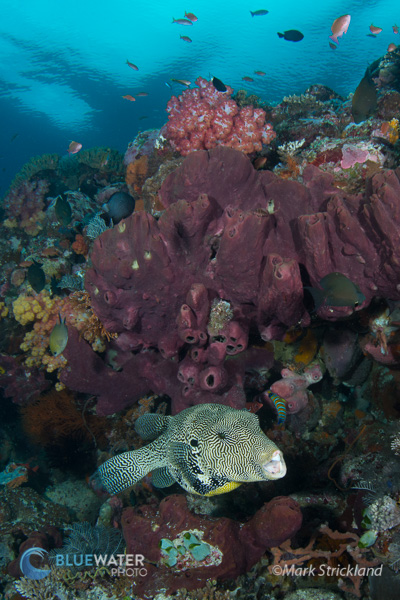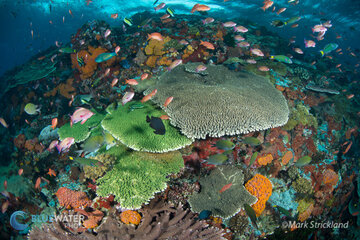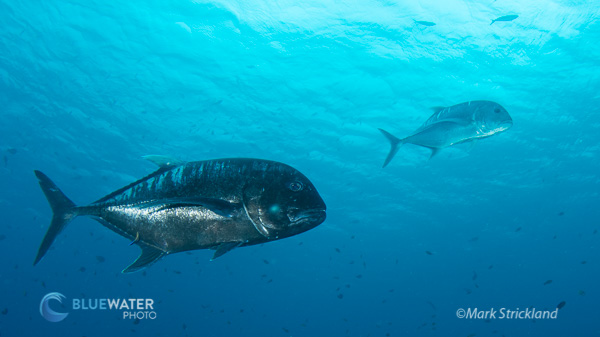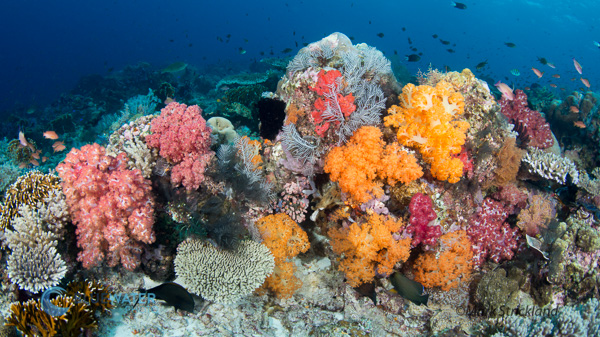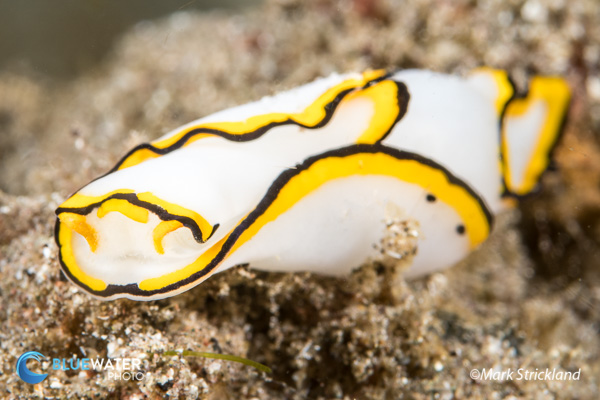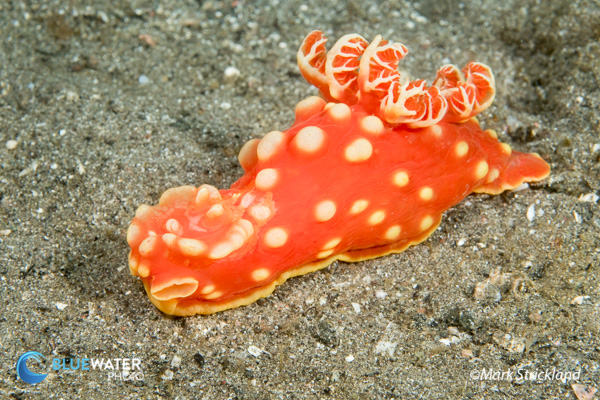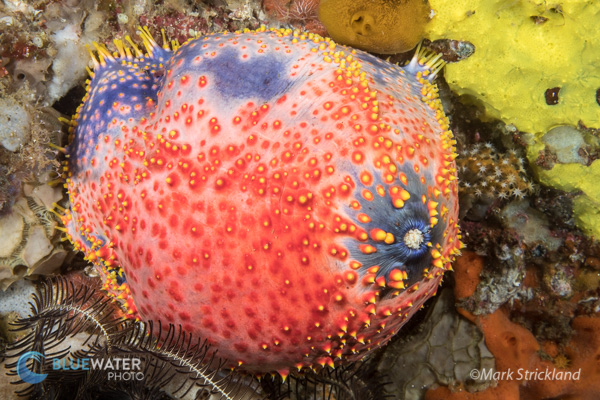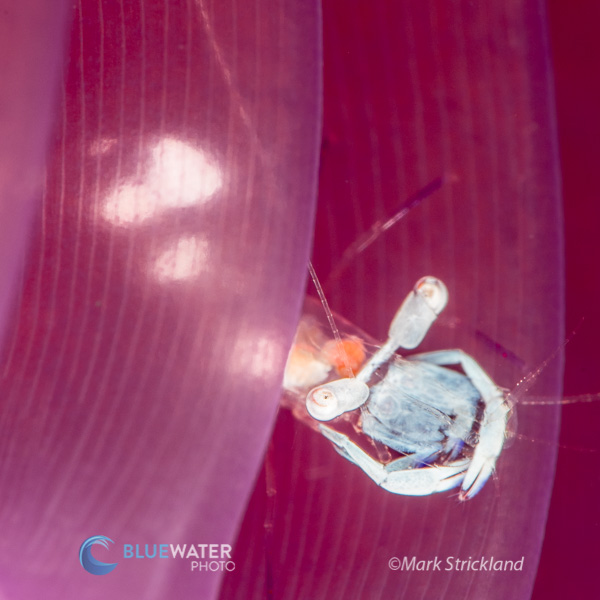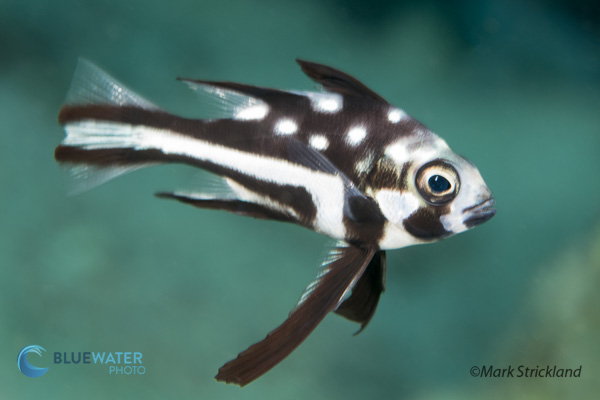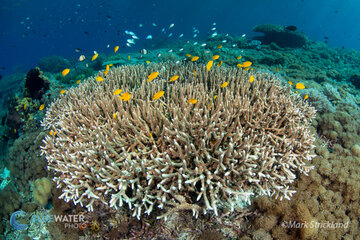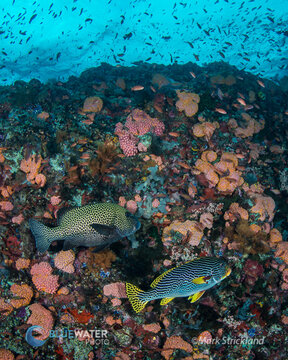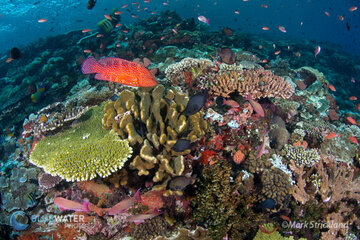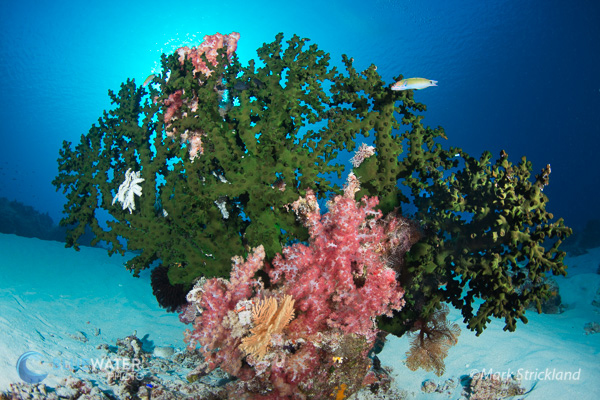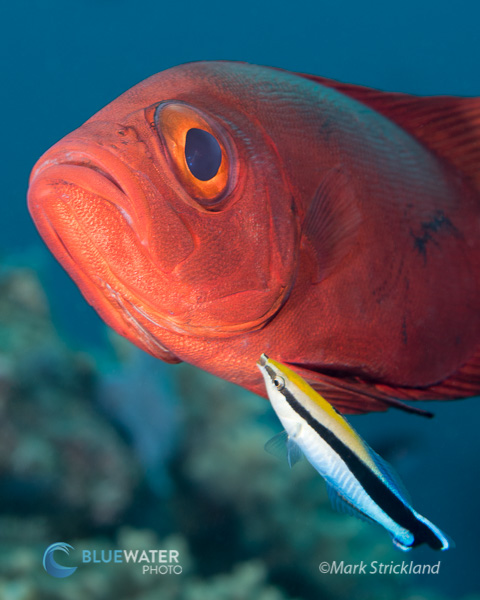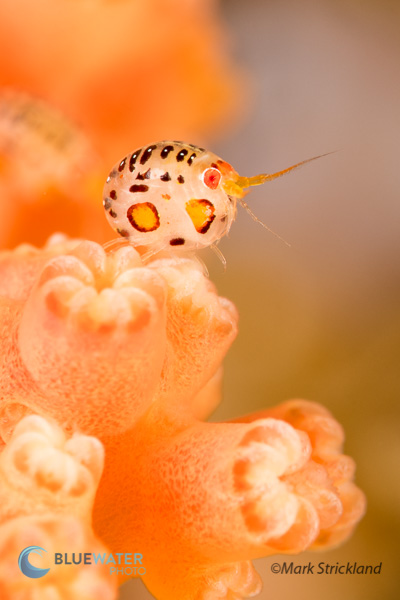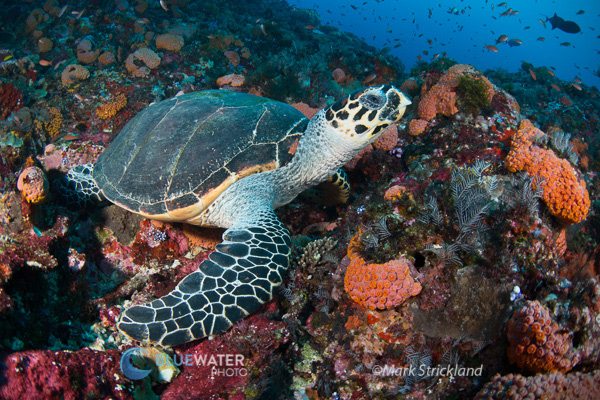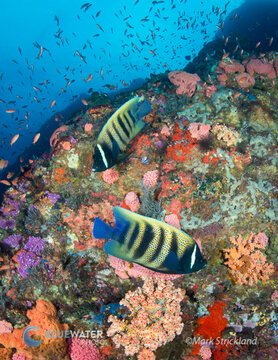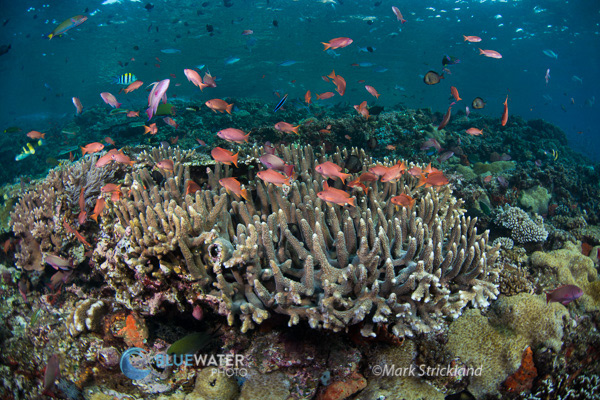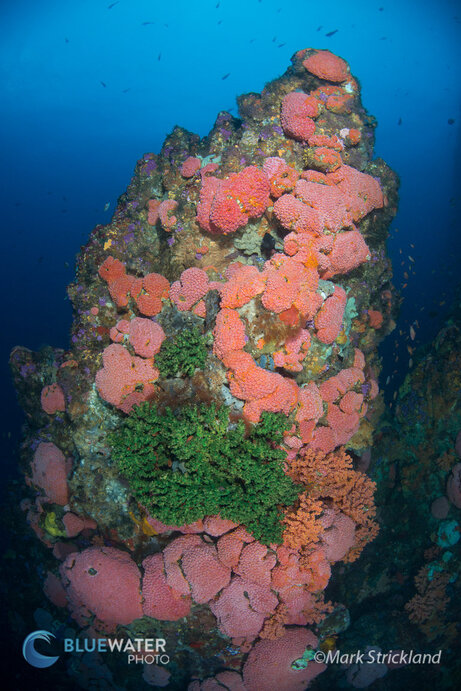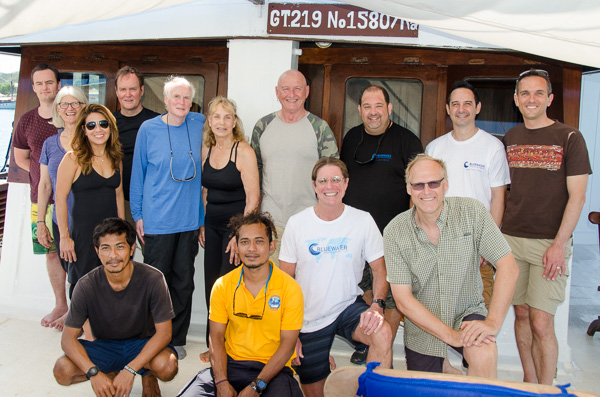2017 KOMODO TRIP REPORT
WORDS AND PICTURES BY MARK STRICKLAND
Diving in the land of Dragons
Arriving at the gleaming, modern airport at Labuanbajo on the west end of the large island of Flores, I was taken aback… the last time I was here there was only a rudimentary airstrip. Instead of just a handful of small fishing boats in the bay, there were now dozens of large liveaboards. As we soon discovered, however, the diving is every bit as good as I remember it.
One of the things that makes the Komodo region so special is its location, forming a merging zone between the relatively shallow, warm, typically clear waters of the Pacific to the north and the cooler, nutrient-rich Indian Ocean to the south. Both areas have their own unique attractions, and it would be hard to choose between them. Fortunately, we wouldn’t have to, as our itinerary called for diving both areas, starting and ending in the north.
After welcome-aboard drinks and an orientation briefing, we got underway to our first dive site, a healthy sloping reef at the small island of Sebayur. While the main objective was to check our buoyancy and get reacquainted with diving, we were immediately struck by the variety and abundance of marine life.
Hard corals dominated the reefscape, punctuated by orange and blue-gray sponges, as soft corals embraced the gentle current. Schools of fusiliers milled about in mid-water, and a huge variety of colorful reef fish flitted about, including various butterflyfish, wrasses, and clouds of anthias.
Within moments of arriving at the bottom, I was greeted by a small octopus, then a yellow leaf scorpionfish, perched on a small coral formation. Lunar-tail bigeyes hovered at a cleaning station, patiently waiting to be serviced by a blue-streak cleaner wrasse. With so many candidates to choose from, it was actually a challenge to pick a photo subject, until a particularly fetching juvenile black snapper presented itself, occupying me for the rest of the dive. The rest of our group was similarly impressed, and it was clear that we were off to a great start. After a tasty dinner under the stars, cruise director Michel introduced the rest of the cheerful crew, who hailed from many different parts of Indonesia.
The next day we awoke to clear skies and calm seas at one of the region’s premier wide-angle sites, Tetawa Besar. The current, which was predicted to be “medium”, turned out to be roaring, which made for a wild drift dive. It actually turned out to be very relaxing, though, once we accepted the fact that photography would be impossible. Initially, that was pretty frustrating, as crinoids, sponges and brilliant orange soft corals adorned every surface, surrounded by lots of colorful reef fish, all just crying out to be photographed.
Stopping to compose a shot was clearly out of the question, however, as the first 25 minutes consisted of flying along like superman, taking care to dodge the coral formations as they zoomed into view. Then, our guides motioned for us to move closer to the shallows, where there was very little current. The orange soft corals were absent at this depth, but the substrate was covered with healthy hard corals, with plenty of friendly reef fish, and several totally unconcerned hawksbill turtles that obligingly posed for our cameras.
Having been teased by the spectacular scenery on the first dive, we eagerly opted to dive here again, but this time the current had diminished to a gentle flow, allowing us to easily swim wherever we wanted. At depth, there was just enough current to keep the soft corals inflated, and the abundance and variety of reef fish made for some great wide-angle photography. Personally, I would have been happy spending several days here, but with so many other sites to see, it was time to move to another area, Wainilu, for the remainder of the day. Here, we found a sloping reef covered with daisy coral, which wasn’t very exciting to look at but was extremely rich with unusual critters. Among the special finds here were cryptic winged pipefish, and a wide variety of invertebrates including the Thecacera, or “rabbit ears” nudibranch. Other highlights included zebra crabs on fire urchins, small red octopus, bobtail squid, and giant and peacock mantis shrimp.
The following day we started with a site known as Shotgun, where we enjoyed excellent visibility and intriguing terrain while whisking along in a healthy current. A large Napoleon wrasse eyed us as we descended, accompanied by several giant trevallies and a quartet of snub-nose pompano. As the current carried us toward a shallow ridge, several white-tip reef sharks patrolled among the ledges, as scores of colorful reef fish flitted about. For a few minutes, the current accelerated our passage over the ridge, then dissipated as we finished the dive in a healthy garden of hard corals.
The next site was among my favorites of the trip, a small pinnacle called Crystal Rock. Rising from depths of 140 feet or more, the rock barely breaks the surface, making for a perfect multi-level profile. Current is often strong here, so we entered well up-current from the rock. The plan was to allow the current to carry us along one side of the rock and finish at the down-current end. In my case, however, I never made it more than a few yards from the entry point, as the scenery was just too good to leave. Approaching the sloping bottom at 80 feet or so, we were immediately surrounded by dense schools of fusiliers and pyramid butterflyfish, followed by squadrons of giant and bluefin trevallies. Several people saw an eagle ray and a manta, as well as blacktip and whitetip reef sharks. What most impressed me, however, were the abundant barrel sponges, whip corals and vibrant orange soft corals.
Our next dive was at another iconic Komodo site, Castle Rock – a small pinnacle, rising from deep water to about 15 feet. The vigorous current required negative entries and quick descents, but attracted lots of schooling fish, including clouds of yellowback fusiliers. Squadrons of giant trevallies regularly parted their ranks, mostly just patrolling, but occasionally charging in to grab an unfortunate individual. Not everyone made it to the up-current end, but those who did were well-rewarded, as half a dozen large gray reef and white-tip reef sharks made multiple passes among the schooling fish. The invertebrate life also seemed to thrive in the brisk current, with fields of small white soft corals, large barrel sponges and clusters of crinoids dominating the reefscape. All too soon it was time to ascend to the top of the pinnacle, which provided perfect shelter for a relaxed safety stop.
We finished the day with a night dive at a site called Spanish Step, where we saw giant mantis shrimp, Coleman shrimp on fire urchins, and a swimming flatworm, among many other critters. The big attraction, however, was the chance of encountering the site’s namesake, Spanish Dancers. And, thanks to our guides Rama and Obi’s eagle eyes, we were not disappointed, as they found a beautiful, large specimen that provided some great photo ops as it danced in mid-water.
So far we’d only seen the north side of Komodo, thoroughly enjoying its great visibility and warm water temperatures. By comparison, the south side is often cold and murky, but it offers so many interesting and unique creatures that no Komodo trip is complete without a visit there. With this in mind, we headed to Horseshoe Bay at Rinca Island, home to several iconic southside sites. For our first two dives, we dropped in at perhaps the most celebrated place of all, a small pinnacle called Cannibal Rock. The cooler water was a bit of a shock, but the moment the reef came into view, we all forgot about the temperature. An amazing profusion of life surrounded us, starting with dense clouds of anthias, fusiliers and damselfish in mid-water. Continuing our descent, we were greeted by schools of yellow snappers and surgeonfish, along with emperor and semi-circle angelfish, and a large barramundi cod, a species that has become quite scarce in most locales. Thanks to vigorous currents and availability of nutrients, marine life here is super-concentrated, with every square inch of substrate occupied by hard and soft corals, anemones, sponges, crinoids, tunicates, and all manner of colorful creatures competing for space. Not only is there a tremendous abundance of life, but everything at Cannibal Rock seems oversized, growing significantly larger compared to the same species from other locales. We also saw animals here that simply are not found elsewhere, such as sea apples, the world’s most colorful sea cucumber, and ladybug amphipods, which closely resemble their terrestrial namesake, but are even smaller – fully grown no bigger than a match head. There were many other critters for the macro photographers, including a number of nudibranch species, fire urchins with zebra crabs, wire coral shrimp and other goodies. And, while there were plenty of good subjects at depth, marine life was equally abundant in the shallows, providing great scenery and photo subjects right up to safety stop depth. Having started the day with such an awesome site, it was an easy decision where to do our second dive—right back to Cannibal Rock!
While we also hoped to dive another iconic nearby site called Yellow Wall, strong currents in the afternoon made it inadvisable, so we opted for an easy, sloping muck dive known as Torpedo Alley, named for the electric rays that are sometimes found there. We didn’t encounter any, but did find some excellent macro subjects, including a variety of nudibranchs and flatworms, a large helmet conch, and vivid purple sea pens that were home to various small shrimp and porcelain crabs. This was also our site for the night dive, where several more nudibranch species were found, as well as appropriately named orangutan crabs, which, being covered with reddish-brown filamentous algae, closely resemble their jungle-dwelling namesakes.
Having reached the southernmost part of our journey, it was time to start working our way back north, starting with another lively and colorful site called 3 Sisters or W Reef. As its name implies, this site features three prominent pinnacles that rise from a sandy seafloor to just below the surface, making for an ideal multi-level profile. Subject to robust current flow, these pinnacles are natural magnets for marine life, and are covered with healthy sponges, orange cup corals, green tubastraea trees and crinoids. Sea apples can also be found here, as well as fire urchins with Coleman shrimp and zebra crabs, stalked tunicates, and even ladybug amphipods. Our group saw most of these, plus many more interesting and photogenic critters. At least as big an attraction, however, is the fish life, including schooling fusiliers and surgeons in mid-water, plus a huge variety of reef dwellers such as yellow-mask angelfish, soldierfish, and various wrasses and butterflyfish, to name just a few. Most of us had nearly an hour bottom time, yet it seemed like no time before we had to surface. The diving was so good that it was hard to leave, but with more good sites to see, it was time to continue our northward journey.
Our next dive was a sloping reef called Secret Garden, where we encountered a forest of soft coral trees at about 60 feet. Swaying in the mild current like stalks of pink and purple broccoli they made for compelling scenery, but were also home to a variety of cool creatures, including soft coral cowries, porcelain crabs and triplefin gobies. We also saw some unusual fish at this site, including the box-like cowfish, as well as several large mobula rays, slowing winging past our group. Moving into the shallows near the dive’s end, those who looked closely were rewarded with a great variety of tunicates in nearly every color of the rainbow.
Batu Bolong – Back to clear, warm water! This northside site is a tiny islet bathed by strong currents, which dictated that we dive the lee side. Protected from the current, we all had a leisurely dive, surrounded by clouds of fusiliers, damselfish, rudderfish, and squadrons of giant trevallies. A couple of giant sweetlips meandered among the divers, seemingly unconcerned, even when approached by photographers. Perhaps the greatest highlight, however, was a pair of super-mellow hawksbill turtles which obligingly posed for photos as they browsed amongst colorful sponges and cup corals. The great scenery continued right up to the surface, where swarms of orange anthias hovered over healthy branching corals. Everyone loved this dive!
The next day began with a return to one of the region’s premier wide-angle sites, Crystal Rock. This time, the current was running opposite of our last visit, allowing us to see the other end of the reef. Dropping in at the reef’s base, we could easily see the rock over 100 feet away. A pair of hefty dog-tooth tuna held their position effortlessly in the vigorous current, seemingly mocking the efforts of us divers, as a hawksbill turtle swam through the midst of our group. Those who made it to the upcurrent end were rewarded by sightings of white-tip and gray reef sharks and a dozen or so giant trevallies, along with schools of surgeonfish and fusiliers in mid-water. The orange and pink soft corals adorning the rocky substrate were fully inflated, completing the stunning scenery with splashes of brilliant color. All too soon, time and air supplies dictated our ascent, where we hung effortlessly in the shelter of the shallowest peak.
To the disappointment of some and delight of others, Castle Rock had almost no current, a big contrast to our last visit. Accordingly, the soft corals were mostly deflated, but conditions made for an easy dive, allowing us to explore the entire site with little effort. Schooling fish were still present in good numbers, including spadefish, rainbow runners, fusiliers, and surgeonfish in mid-water, along with bigger species like giant trevallies and Napoleon wrasse. The mellow conditions also allowed for longer bottom times, providing plenty of opportunities for observing and photographing the wide variety of colorful reef fish throughout the site.
For the afternoon dive, we had a choice of two adjoining sites, one of which was Golden Passage, where a strong current whisked us along on an exciting drift dive over an undulating bottom with many soft coral covered ledges. Waves of fusiliers swept past, as packs of giant trevallies periodically parted their ranks. A wide range of reef fish tucked into the ledges, including coral groupers, blue-girdle angelfish, starry puffers and countless others.
Those who preferred a more relaxed pace chose Golden Bay, a sloping reef with large fields of staghorn corals, separated by sandy areas and scattered patch reef. The varied habitat provided homes for a variety of invertebrates, including soft coral crabs, mushroom coral shrimp, and blue dragon nudibranchs, along with plentiful reef fish like pajama cardinalfish and leaf scorpionfish. For the night dive, Komodo Step provided a sloping reef, home to a starry night octopus, blue-spotted stingray, orangutan crab, urchin shrimp, dwarf cuttlefish, and several nudibranch species.
Our last day began by revisiting one of the most popular and beautiful sites in Komodo, Batu Bolong. Typically subject to strong currents, we happened to catch it at slack tide, so we had a chance to explore areas not seen on our previous visit. Giant and blue-fin trevallies made leisurely patrols, as giant and many-spotted sweetlips hung closer to the reef. Yellow mask, six band and emperor angelfish took turns at a cleaning station, patiently waiting to be serviced by a blue-streak cleaner wrasse. The substrate itself is an attraction here, consisting of steep rock pinnacles covered with colorful sponges and cup corals. In one area, a huge section of sloping reef was carpeted with a seemingly endless field of orange cup corals… one can only imagine what it looks like when current is running and polyps are open.
For our final dive of the trip, we returned to another top site, Tetawa Besar. Great visibility and mild to moderate current made for perfect drift diving conditions, allowing us to coast effortlessly along the extensive sloping reef. Ribbon and diagonal-banded sweetlips greeted us in the deeper sections, as did large schools of humpback and bluestripe snapper. The prolific orange soft corals, barrel sponges and crinoids made for colorful scenery, nicely complementing the constant parade of reef fish. Bigger animals also made an appearance, including several friendly hawksbill turtles and a graceful but shy spotted eagle ray. All too soon, it was time to ascend, pack our gear and prepare for the journey home. You’d think that after spending a week of nonstop diving around Komodo, we’d be ready for a change of pace. At least in my case, however, I felt like we only scratched the surface, and I think most of the other participants would agree… when to we get to dive Komodo again?!
HOW TO BOOK A TRIP TO KOMODO
Bluewater Travel can book you at any resort or with any operator in Komodo for the same cost or less than booking any other way. We know the diving, resorts, operators and when to go better than anyone else!
Check out our Komodo Liveaboards and Indonesia Liveaboards guides.
Email us at info@bluewaterdivetravel.com and tell us that you read this article to get a special price for your next dive trip.

